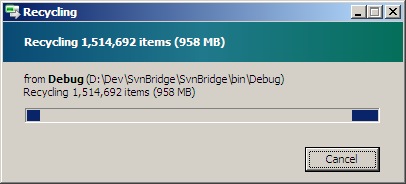About a year and a half ago, I start an exciting new project (there is a demo of the actual project here). The actual application is fairly complex, and has some it gave me the chance to explore some very interesting ideas. Rhino Security is a generalization of the security scheme used in this project, and it is pretty much the driving force for Rhino Igloo. But that is not what I want to talk about.
What I do want to talk about is the infrastructure that we used for the project. We used IoC, OR/M, AoP, MVC and many other buzz worthy TLD. It was the first time that I had the chance in implementing real high end complexity reduction techniques. I left the team 10 months ago. In the meantime, the application was under active development, got a few new team members and had two major releases.
I am really proud of that system.
A few weeks ago I got a phone call from the current team lead, asking me about the windsor.boo file that is sitting there. The last time anyone touched it was shortly after I left, after which, it just... existed. I had the chance to do a code review on the new stuff that the team developed, about three months ago. I couldn't find any real difference between the code develop before and after I left.
Anyway, I had to spend 15 minutes on the phone, explaining the process that was going on there. Before I left (and during the time I was the team lead), I made sure that I passed on all the knowledge that I had about the system, the design decisions and the overall picture. However, there was a period of nearly three months in which I forgot that we even had this infrastructure, because we hadn't have to deal with it for that time period. After I left...
- 9 months.
- 2 major releases.
- Zero issues with the infrastructure.
I asked the team lead what she thinks about that. Since it is her project now, and if she thinks that it was the right decision to make. She love the infrastructure, and wouldn't hear about using a lower end solution. Most of what we did was actually going over the file and explaining historical decisions, for that matter.
As an additional data point, I was able to look at a piece of code I have last seen over a year ago and figure out not only what it does, but the how and why of it with no ramp up time.
I consider this a success.







